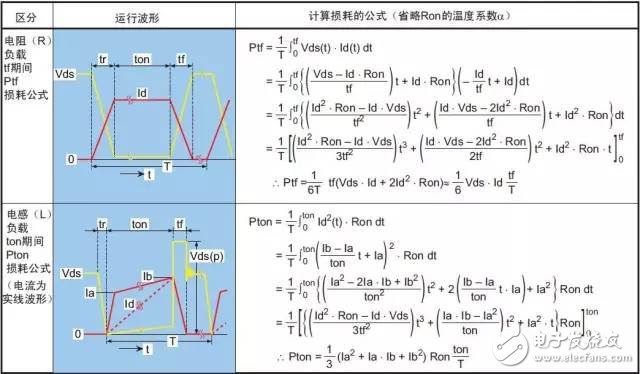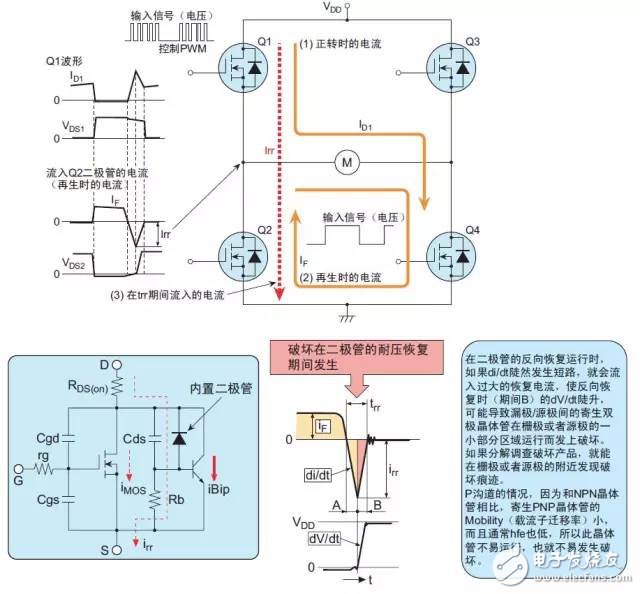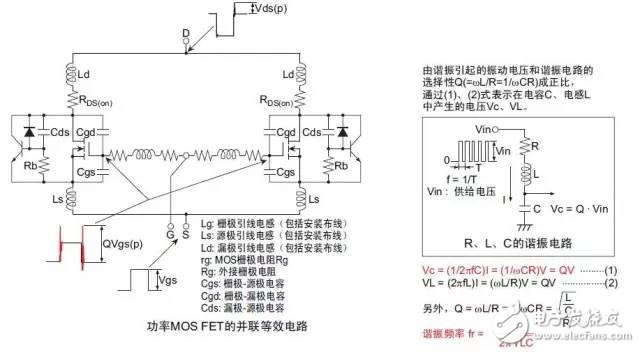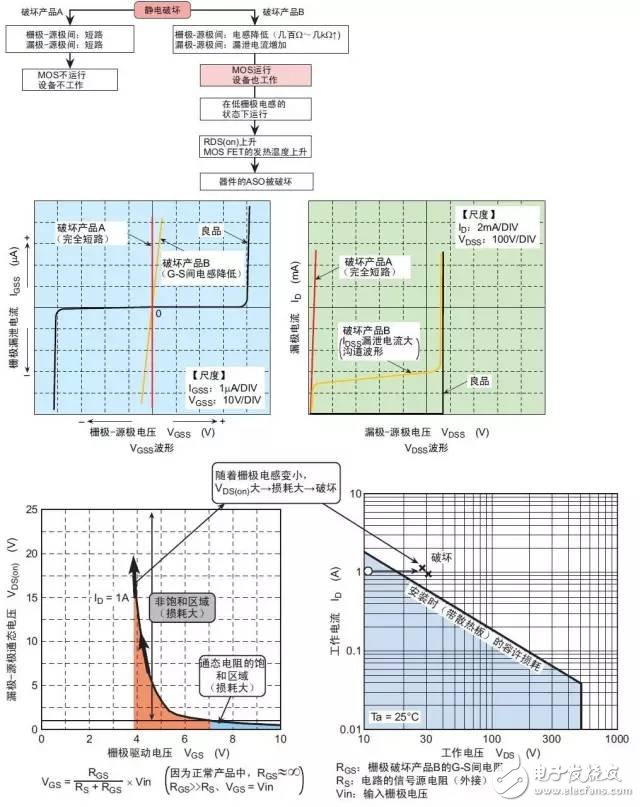The first type of failure is **avalanche breakdown**. This occurs when a voltage surge exceeds the rated VDSS of the device, causing the drain-source breakdown voltage (V(BR)DSS) to be reached. If the energy from this surge exceeds a certain threshold, it leads to irreversible damage. This can happen, for example, when the retrace voltage generated during the switching of an inductive load or the spike voltage from leakage inductance exceeds the drain voltage rating of the power MOSFET, pushing it into the breakdown region and causing avalanche damage.
A typical circuit example is shown below:

---
The second type of failure is **thermal damage**, which occurs due to excessive heat outside the safe operating area. Thermal stress can come from either DC power or transient power sources.
**DC Power Causes:**
- **On-resistance (RDS(on)) loss:** As temperature increases, RDS(on) also rises, leading to higher power dissipation at a given current.
- **Leakage current (IDSS):** Although small compared to other losses, it still contributes to heating.
**Transient Power Causes:**
- **Load short circuit:** Can cause sudden and intense local heating.
- **Switching losses:** Occur during turn-on and turn-off, and are influenced by temperature and switching frequency.
- **trr loss of the built-in diode:** Related to temperature and frequency, especially during short-circuit events.
When a fault like a short circuit occurs, the resulting overcurrent can lead to instantaneous heating. Additionally, if the thermal design is inadequate or the switching frequency is too high, continuous heat buildup may exceed the chip's maximum junction temperature, causing thermal breakdown.

---
The third type of failure is **internal diode destruction**. When the parasitic diode between the drain and source is operated, it can trigger the parasitic bipolar transistor in the power MOSFET, particularly during flyback conditions. This can lead to a destructive mode of operation for the internal diode.

---
The fourth type of failure is **parasitic oscillation damage**, which often occurs when multiple MOSFETs are connected in parallel without gate resistors. During fast switching, parasitic oscillations can form in the resonant circuit created by the gate-drain capacitance (Cgd or Crss) and the gate lead inductance (Lg). When resonance occurs (ωL = 1/ωC), a voltage much higher than the driving voltage (Vgs(in)) is applied between the gate and source, potentially damaging the gate due to exceeding its rated voltage. Additionally, the oscillation caused by overlapping Cgd and Vgs can lead to malfunctions and further damage.

---
The fifth type of failure is **gate surge or electrostatic discharge (ESD) breakdown**. This occurs when voltage surges or static electricity are applied between the gate and source. These can originate from various sources, such as power-on transients, charging of the mounting equipment, or testing devices. Gate overvoltage or ESD can directly damage the gate oxide, leading to permanent failure.

LCD Digital Signage,HD display advertising machine,Remote control advertising player
HuiZhou GreenTouch Technology Co.,Ltd , https://www.bbstouch.com